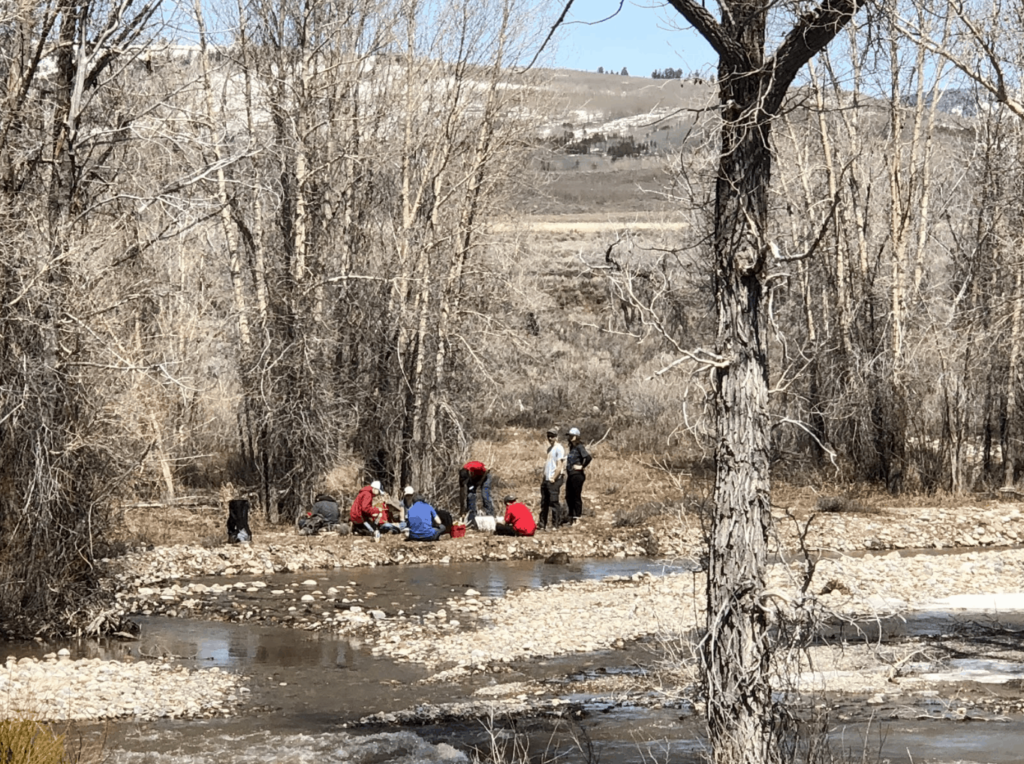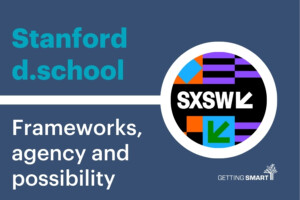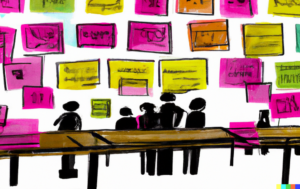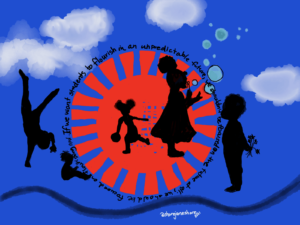Get Kids in the Community and Change the World

Nate McClennen contributed research for this piece
We’re handing off some complex challenges (and some great opportunities) to young people. How do we get them up to speed on what they’re in for and jump start their contribution?
We think getting children outdoors and immersing youth in extended community-based challenges is the answer. We call it place-based education. It is uniquely well suited to build the confidence and skills young people need to contribute to their community.
What is place-based education?
Place-Based Education (PBE) is anytime, anywhere learning that leverages the power of place to personalize learning. PBE is an immersive learning experience that “places students in local heritage, cultures, landscapes, opportunities and experiences, using these as a foundation for the study of language arts, mathematics, social studies, science and other subjects across the curriculum.” PBE deepens personalized and project-based learning, providing a way to connect these efforts to students’ local community and environment for engaging learning that leads to more engaged citizens.
With a network of schools, education programs for visiting groups and a graduate school, Teton Science Schools is a recognized leader in place-based education (#PlaceBasedEd).
David Sobel from Antioch University, keynote speaker at a recent symposium described place-based education as “the process of using the local community and environment as a starting point to teach concepts in language arts, mathematics, social studies, science and other subjects across the curriculum.
Sobel sees community vitality and environmental quality “improved through the active engagement of local citizens, community organizations, and environmental resources in the life of the school.”
Getting young people into the community helps to develop a sense of place, an awareness of the ecological, economic, social, and political factors in a community, and serves as a critical foundation of a democratic society. If students are unaware of and not challenged by the complexity of the local, it is a difficult task to understand the greater regional, national, and global issues.

Why bother?
For some schools, organizing place-based education can be as simple as opening the door. For others, it may involve planning, a bus ride and permission slips.
Administrators might ask “What’s the point? Why not just focus on the basics?” The rationale is simple. It is more and more apparent that basic literacies are not enough. Students need to find ways to apply, own, and direct how literacy and problem-solving skills are used. Place-based education does this uniquely well while it builds capacity for citizenship.
Place-based education builds youth affinity for local assets and context. Providing ample opportunity for students to explore and engage with the world around them builds on the neuro-wired context in developing brains. Sense-making is easier, social-emotional skills build, and responsibility grows. In young children, a sense of wonder is firmly established that will lead to the deep inquiry needed in STEM and other subjects later on in life.
Strong Reggio-Emilia programs (like the Journeys School in Jackson), emerging early childhood networks (like Wildflower Schools), and forest kindergartens are examples of using the outdoors, local community, play, and student interest to lay critical foundations for future success.
A 2015 study showed that a sense of awe develops altruism. UC Irvine researchers describe awe as “that sense of wonder we feel in the presence of something vast that transcends our understanding of the world.” Awe is cultivated in the natural world and by the arts. It promotes a broader sense of context and prosocial behavior including kindness and contribution.
As students and schools nurture this curiosity, place-based frameworks connect curriculum with authentic, extended challenges. These may start in the classroom, scale to the school, and end up in the local, regional, or global community. It is a uniquely efficient approach to build agency, design skills, and confidence in complexity–all critical in the innovation economy.
Community challenges are interdisciplinary by design, with multiple inputs and large data-sets. Setting students loose on these types of experiences develops systems thinking skills, computational expertise with big-data, and multiple approaches to complexity.
With a deeply ingrained sense of inquiry and curiosity in local places and frequent iteration of authentic, community-based challenges, students build thick and well-developed community connections. One great example is Health Leadership High in Albuquerque where staff and students solicit project ideas from community health providers. Every project must have deliverables valuable to the community. “We see where needs are. We create advocates for change,” said Executive Director Blanca López.
With equity issues surrounding a student’s ability to build social capital, PBE offers these opportunities through multiple adult interactions and collaborations. Simultaneously, communities build capacity for their own place-based learning to revise and reimagine community. This mutually beneficial partnership impacts the future of local places.
Place-based is central to next-generation learning.
Leveraging local assets and landscapes is increasingly at the center of next-generation learning models. Connected to the core of deeper learning and personalized learning, magnified through tools of project-based learning and competency-based assessment, and supported by the urgent need to develop skills and dispositions as well as knowledge, we see opportunity for increased pilots, networks and schools diving into the approach. Evidence is mounting in innovative schools and organizations.
Next Generation Learning Challenges, a national innovation grant program, describes situated learning which includes project-based learning along with community-based education, apprenticeships, and other authentic learning modalities. Extended challenges at the top of Bloom’s taxonomy in complex settings embed social interaction and collaboration.

Rural schools, by default, have led the way on the ecological side due to small size and abundant spaces to explore. A growing cohort of schools are leading the way such as the STAR school in Arizona, Cottonwood School in Oregon, Journeys School in Wyoming, Teton Valley Community School in Idaho, University Charter School in Alabama, and Crellin Elementary School in Maryland.
Place Network, an initiative developed by Teton Science Schools, is place-based learning model that is shared and accelerated within a partner network of rural schools.
CITYterm is an example of an urban place-based experience for high school students. The New York City program combines seminars, city expeditions and meetings with a variety of New Yorkers. Below, Elizabeth Irvin leads a tour of Sunset Park culminating a week long deep neighborhood study.

Under the leadership of Mayor Marty Walsh and Superintendent Tommy Chang, a network of nonprofits brought together through Boston After School and Beyond, the city has seen a dramatic increase in student learning outside the classroom. Citizen Schools embraces the city as a classroom to create 10 week apprenticeships for middle school students.
For eight years Andy Meyers led the interdisciplinary, experiential City Semester in the Bronx. Students co-construct their own learning experiences and address urban challenges. Andy has incorporated the city as a classroom as a core element in the new Whittle School & Studio design (schools opening 2019).
Minerva is an innovative university program that combines socratic seminars and location-based applications in seven cities.
What’s the link to social impact?
“Emphasizing hands-on, real-world learning experiences, this approach to education increases academic achievement, helps students develop stronger ties to their community, enhances students’ appreciation for the natural world, and creates a heightened commitment to serving as active, contributing citizens,” said David Sobel.
Place-based education is not just about visiting; it is about investigating, participating, and contributing. It benefits schools by building thick school community connections that result in partnerships and resources. In return, school communities contribute to social impact in several ways:
- Builds impact dispositions: With extended and authentic challenges, PBE is a uniquely efficient approach to build student agency as well as design and entrepreneurial skills.
- Values contribution: Rather than a focus on preparing for future opportunity, place-based experiences value community contributions today.
- Develops appreciation: Every place has something to offer and something to teach. Investigating places builds an appreciation for roots and connections making it more likely that young people will make sustained local contributions.
An emerging opportunity is to use PBE to illustrate how everything has become computational. Every big issue–health, poverty, water, traffic–has a big data set associated with it. Like AI4All in Oakland, place-based experiences and connections with computer science experts help young people engage in developing solutions to big challenges.
Deeply connecting learning to community allows students to routinely appreciate, understand, and positively impact a place – while meeting required outcomes. By also putting place-based education at the core of next-generation learning experiences in schools, students develop the depth of knowledge, skills, and dispositions to engage as effective change-agents in a place – local, regional, national, and global.
For more see:
- School Design that Combats Nature Deficit Disorder
- Equipping Young Leaders to Take on the 32 Most Important Issues of Our Time
- Building the Cognitive Muscles to Thrive in the Automation Age
- Place-based Education Thought Leadership Campaign
Nate McClennen is the Vice President of Education and Innovation at Teton Science Schools.
This post was originally published on Forbes.
Stay in-the-know with all things EdTech and innovations in learning by signing up to receive the weekly Smart Update.





Nathan
Awesome article. Quite timely for me as well. My wife and I are looking at having kids soon, and conversation has recently covered school and education. The idea behind immersive learning experience and PBE is amazing. Definitely a massive change from the "sit and listen" experience I had in school. This is really exciting.